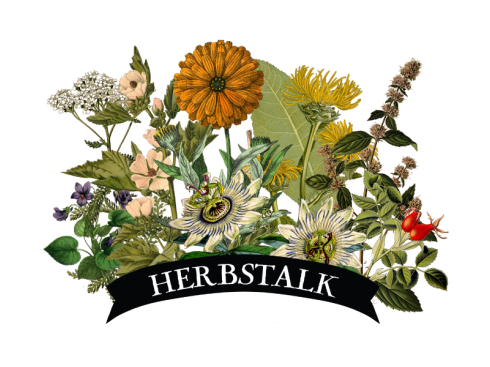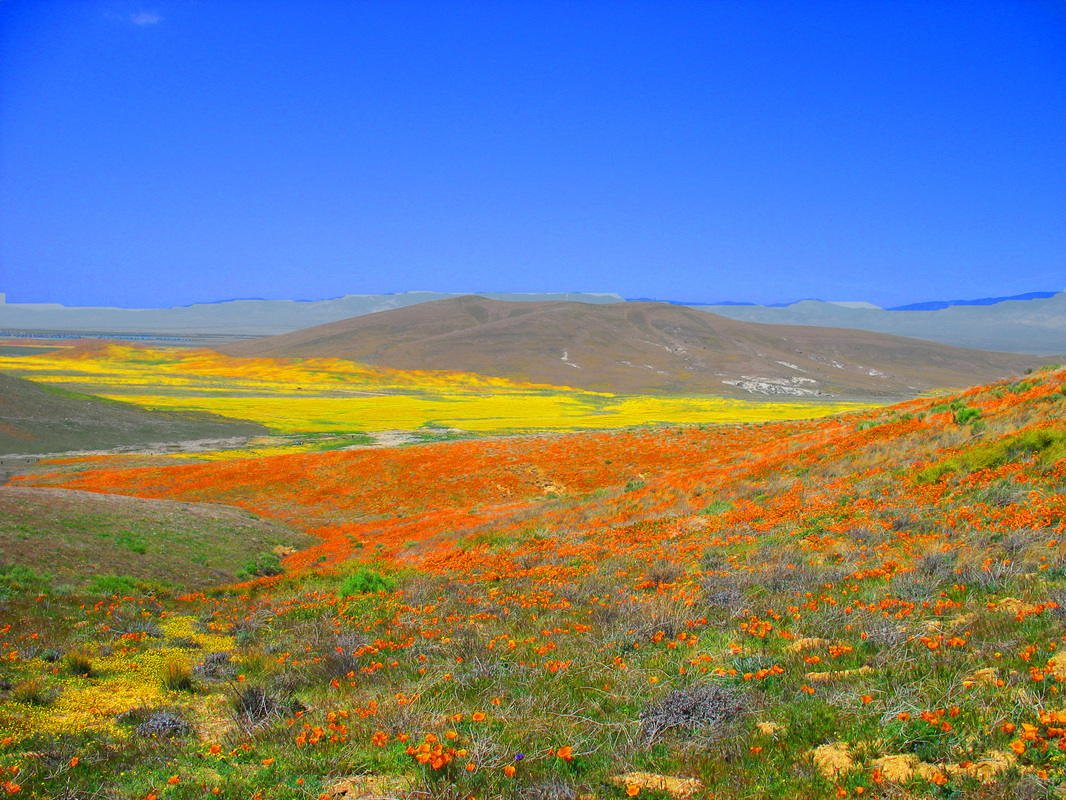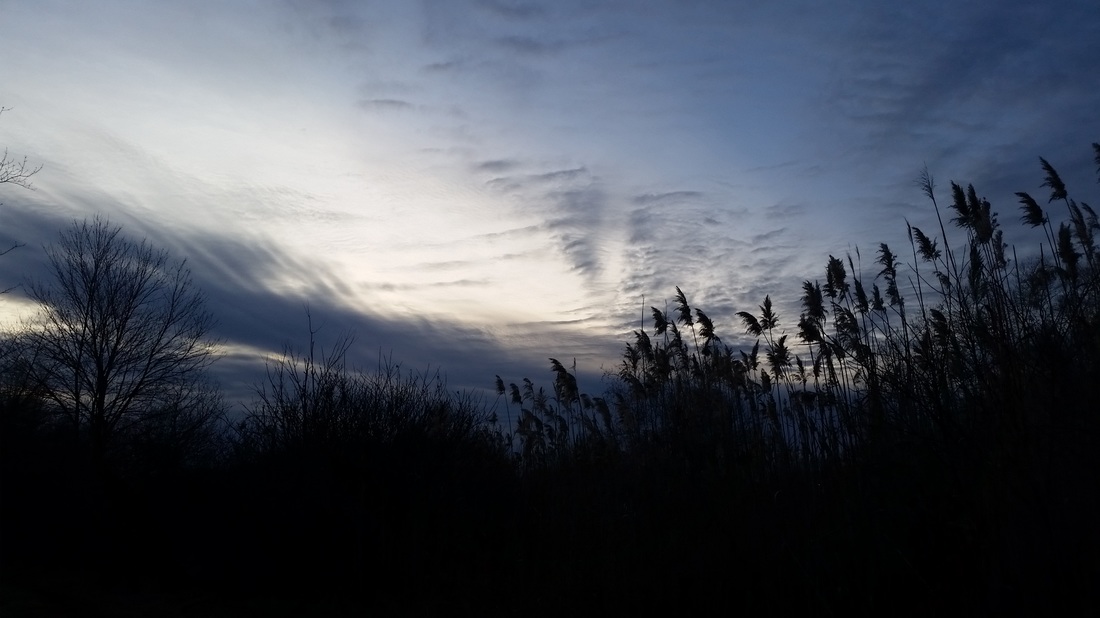|
by Patrice Green This is a different kind of blog post than my usual entry, but this topic has so fired my imagination that I had to write about it. There is current speculation that the annual spring bloom in Death Valley this year has the potential to become a “superbloom.” Yes, flowers do bloom in the desert, but superblooms are rare occurrences, perhaps happening once in a decade. During a superbloom the seeds that have lain dormant, sometimes for many years, have the perfect conditions and bloom simultaneously and for an extended period of time, with the plants often getting quite large. For a superbloom to occur, there needs to be enough sunlight and warmth, the absence of drying winds, and enough rainfall spaced at regular intervals throughout the winter and spring. El Nino conditions are required to keep the plants growing. There is a terrific article on the subject here. As an herbalist I’m constantly amazed by the power, resilience and beauty of the plants we work and live with on a regular basis. As a flower essence practitioner, I know that plants will communicate with those willing to receive their messages and teachings. These teachings are different than the lessons learned when taking a tea or a tincture. I often liken it to a different facet of the plant’s personality. Herbs taken internally will work on your physical body as much as your emotions. Flower essences, however, well - those teachings in my experience are much deeper, going directly into the psyche and spirit. Flower essences work energetically and do so quite quickly, generally speaking. So, given that background, you surely can see where I’m going with this. The temperatures in Death Valley drop below 100 in mid October until rising again to triple digits in the middle of April. The temperature range this past several days has been as low as 42 in the mountains and as high as 86 at Furnace Creek. This is considered chilly winter weather here in the hottest spot on the planet. The record temperature at Furnace Creek was 134°F on July 10, 1913. January 8th of that same year the temperature was recorded at 15 degrees. That’s quite a spread in seven months. Imagine some version of that being repeated for many, many years until finally the perfect conditions for transformation arrive, allowing the dormant seeds to crack, sprout and seemingly suddenly appear in full bloom. What do these specific plant spirits have to teach us mere mortals? What does it take to survive, and ultimately thrive in that environment? What knowledge is gained from living in such adverse conditions? After a superbloom the seeds of the plants return to their dormant state and await the next perfect storm to bloom again. What lessons lie within that time frame? What inspiration and lessons are here for those of us dealing with a challenging cycle of life experiences? Even the most seemingly fragile creatures have hidden resources that allow them to survive and even thrive in harsh environments. It is illegal to harvest plants in Death Valley because it would disrupt the re-seeding process, however flower essences are often made without harm to the plant, so it is possible to make essences from superbloom plants. You may not see me for a while, as I might need to take a trip out west. I hear our desert friends calling to me!...  Patrice Green is an Herbal Educator, Certified Aromatherapist, Energy Medicine and Reiki Practitioner and founder of Green Aromatics. She is also the Assistant Director at the Boston School of Herbal Studies. She received her herbal training at the Boston School of Herbal Studies, and shamanic training from Isa Gucciardi, Ph. D. at the Sacred Stream in Berkley, CA. Inspired by time spent among the coastal Redwoods of Muir Woods and its beach, Green Aromatics strives to imbue its products and services with the same resilience, joy and equanimity of these majestic beings. Patrice may be reached through the Green Aromatics website. by Jenny Hauf The older I get the more I find myself at peace with winter. I don’t mean to suggest that I ever disliked winter; being from Wisconsin I am just as comfortable within the graphite atmosphere of February as I am within the leafy arms of July. But feeling at home does not contentment make. I’ve always tended toward the melancholy and that, along with the season’s somber palette and farm work’s cyclical nature, which plops me at my desk by the beginning of December and leaves me there until March, can lead to a true dreariness of the soul. In past years I found myself listless, a limp tangle of ennui, desire, and aimless energy. I longed for the kinetic green of April, the rushing thaws of March. All my discontentment bucked against the seamless monotony that my indoor life was steeped in. I began burying the hatchet with my winter self a few years ago by asking friends to take me outside. Bundled in wool and down, I trudged to trailheads and embarked into a landscape of brown, white, and green. A birder taught me how to find song sparrows and chickadees in the muted light, listening for them as we traipsed through Fowl Meadow, a tract of land that roams beautifully through marshland just outside of Boston. Measuring my step and cocking my ears, suddenly I found myself engaged in a new sensuality with the white world around me. The tiny wilderness of the place, brightened by the piping calls of winter birds flying through the phragmites, filled my mind with textures of an elegant complexity brave and new to my dulled heart. Another friend showed me how to learn the names of trees and plants by discovering their buds, the decaying leaves at their feet, and the forked frames of their branches. I began keeping records of the living things around me. Their titles were delicious in my mouth and on the page—hop-hornbeam, Quercus macrocarpa, Pinus strobus, hemlock and hazel—and so were their forms. The luminescence of river birch, shining in the swamps, never failed to make my heart skip a beat, nor did the magically soft, mossy trunks of white Atlantic cedar, the Tree of Life. I introduced myself to sugar maple by finding its decaying leaves with lobes lightly toothed like the new incisors of kittens, and white oak by the gently curved segments of its weather bleached leaves. As that winter wore on I urged my sleepy self to rouse to the realities discovered during those rambles. Finally brought out of the static warmth of my house and into the clean white air, I awakened like a frost flower. I remembered the presence of green beneath all of the protective bark that held tightly to the life within and saw that I was walking in a world filled with the slow breaths of hibernation, quiet and wise enough to know that a yearly rest was needed in order to burst forth with flamboyance in the spring, turning the conservative landscape, so cautious with its color, so discreet in its hope, into a cacophonous tapestry of hormones and music and leaves. My grandfather, an avid gardener who spent the growing season in constant devotion to the voraciously graceful lives within his beds and borders, once told me that he loved trees most in winter. He was enamored of what their nakedness revealed: voluptuous curving limbs sloping toward the sky; the inky tips of branches; deep patterns engraved upon brown bark. My grandfather loved watching these street trees—the statuesque ginkgoes and ash, the cherries and honey locusts raising their thin arms toward the sky—as he drove the old station wagon to church and the hardware store. Whenever I reflect on the winter landscape I return to my grandfather, who smelled of coffee and sawdust and, in winter, like the freshness of snow, and his love of what he found in these months bereft of the lush and light. It has taken me years to find a similar love of the spare streets and woods and to see the February landscape for what it is: a scene of sleep and survival, where the earth has shaken off its old skin like a snake and waits for the time when its soul is so sated that it can begin breaking into a new body. Antoine de Saint-Exupéry’s reminder that “what is essential is invisible to the eye” is easiest to understand in these dark months, but when we learn to read what is written in the bark of birch and to hear the songs of chickadees we find that jewels of truth are everywhere once we have learned how to find them.  After creating the medicinal herb program at Allandale Farm, Jenny is excited to be embarking on the second season of her own herb farm, Muddy River Herbals. She is thrilled to be offering high quality, sustainably grown herbs to the people of eastern Massachusetts. For more information please visit her website or contact Jenny directly at muddyriverherbals (at) gmail (dot) com for ordering inquiries and herb availability. Muddy River's herbal CSA is currently accepting new members so please visit the website for details. |
Archives
November 2023
Categories
All
|
Join the Newsletter!
Receive news about future Herbstalk events
Thank you!
You have successfully joined our subscriber list.
Copyright © Herbstalk 2024



 RSS Feed
RSS Feed